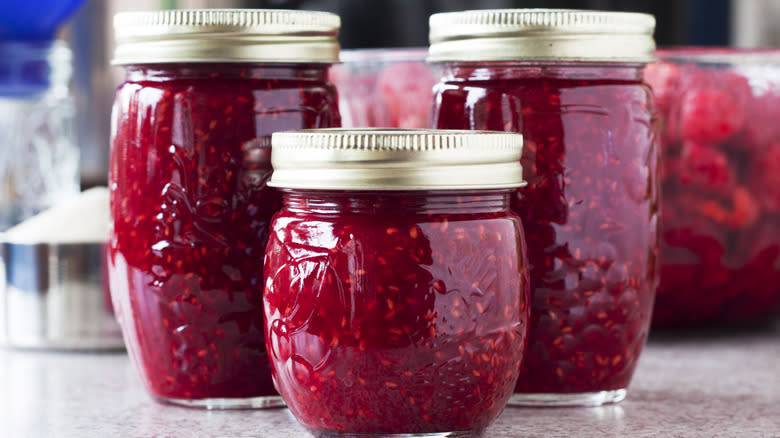The Stirring Mistake That Can Completely Ruin Homemade Jam

Making homemade jam is a surprisingly easy feat. Typically, all you have to do is simmer your chosen fruit -- or fruits -- with water, sugar, and lemon juice until the mixture gets thick and bubbly. However, if you don't know the basics of cooking homemade jam, it's also surprisingly easy to ruin it. For starters, while it may be tempting to stir it as much as possible on the stove based on the notion that you're mashing up the fruit and blending all the ingredients, you'll want to stay hands-off practically the entire time.
Over-stirring your jam can have a few consequences. For one, it can release more steam than necessary, so all those delicious fruity smells will (literally) vanish into thin air. But also, meddling with your pot while the fruit is heating could slow down the process, meaning it can take longer for your mixture to set into that jammy consistency. In the worst-case scenario, overly stirring your fruit while it cooks may cause it to crystallize, giving you something close to candied fruit -- and that isn't the goal.
Read more: 13 Simple Tricks To Pick The Best Fresh Fruit Every Time
The Right Time To Stir Homemade Jam

Although you want to avoid over-stirring your jam, you still have to get your spoon in there on occasion so your fruit doesn't stick to the bottom of the pot. So, when are the correct times to stir?
When you begin heating your ingredients on the stove, stir just enough so that they don't burn. To help keep your spoon away from the pot, leave the heat on low. Keep in mind that using low heat means your jam may take up to two hours to finish cooking. Luckily, you don't have to stand by the stove the entire time. If there is a time to get your spoon in there, it's after the jam has set. Your mixture should start looking thick, bubbly, and more jam-like after it has simmered for the duration of its cooking time.
Right before you take it off the stove, stir it to make sure your jam is not sticking to the pot. This will also help get rid of any scum, aka the foam that forms when you cook jam. However, you can also skim it off the top with a spoon. Finally, once your mixture has cooled, you may want to give it one last stir to ensure any fruit chunks are evenly dispersed before you place it in jars.
Read the original article on Tasting Table.

 Yahoo Lifestyle
Yahoo Lifestyle 
